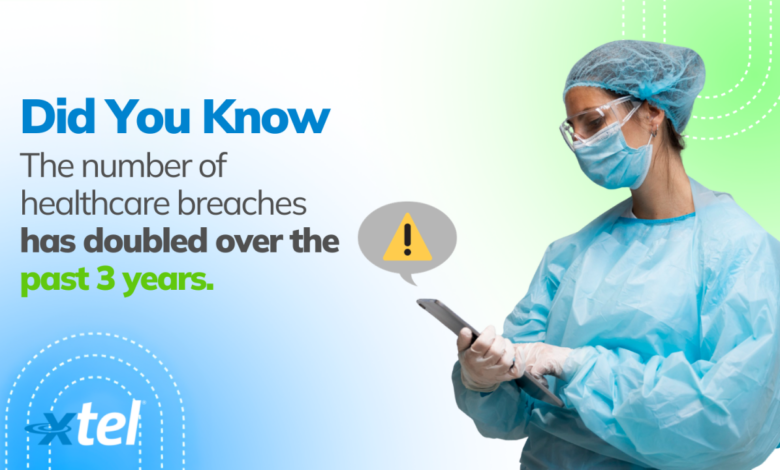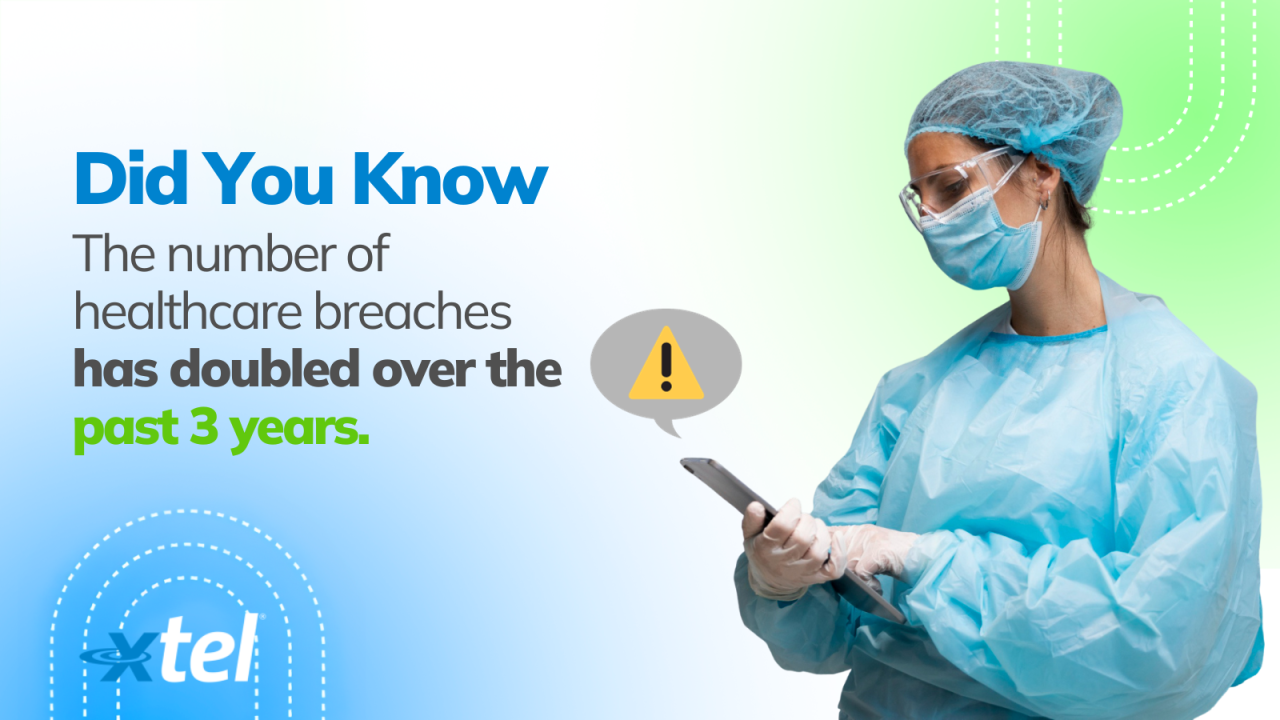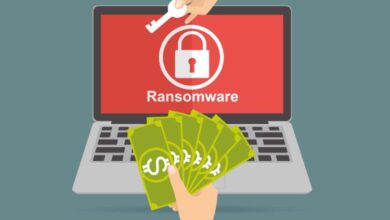
Protecting Patients with Healthcare Cybersecurity
Protecting patients with healthcare cybersecurity is more critical than ever. In today’s digital age, healthcare organizations sit atop a treasure trove of highly sensitive data – patient records brimming with personal information, medical histories, and financial details. This makes them prime targets for cybercriminals employing increasingly sophisticated tactics, from ransomware attacks crippling entire hospital systems to insidious insider threats leaking data piecemeal.
The stakes are incredibly high; a data breach not only jeopardizes patient privacy and trust but can also lead to crippling financial penalties and reputational damage. This post delves into the evolving landscape of healthcare cybersecurity, exploring the threats, regulations, and proactive strategies necessary to safeguard patient data effectively.
We’ll examine the various types of cyberattacks plaguing the healthcare industry, from ransomware and phishing scams to more subtle data exfiltration methods. We’ll also explore the legal landscape, focusing on crucial regulations like HIPAA and the hefty penalties for non-compliance. Then, we’ll dive into practical solutions, including robust security measures, employee training programs, and the role of cutting-edge technologies like AI and blockchain in bolstering defenses.
Finally, we’ll discuss how to effectively respond to and recover from a cyberattack, minimizing damage and restoring patient trust.
The Evolving Threat Landscape in Healthcare Cybersecurity
The healthcare industry sits at a fascinating intersection of technological advancement and profound human vulnerability. While technology offers incredible tools for diagnosis, treatment, and patient care, it also presents a vast attack surface for cybercriminals. The evolving threat landscape in healthcare cybersecurity is complex and dynamic, demanding constant vigilance and adaptation from providers. This evolving landscape necessitates a deep understanding of the threats and their potential consequences.
Major Types of Cyber Threats Targeting Patient Data
Healthcare data is a highly valuable commodity for cybercriminals due to its sensitive nature and potential for financial gain. This data, including protected health information (PHI), can be used for identity theft, medical fraud, and blackmail. Major threats include ransomware attacks, phishing scams, malware infections, and denial-of-service (DoS) attacks. These attacks can disrupt operations, compromise patient privacy, and result in significant financial losses.
The sheer volume and variety of these threats make comprehensive security a significant challenge.
Increasing Sophistication of Ransomware Attacks on Healthcare Providers
Ransomware attacks are particularly devastating to healthcare organizations. The increasing sophistication of these attacks involves more advanced encryption techniques, making data recovery extremely difficult and time-consuming. Criminals often target critical systems, such as electronic health records (EHRs), disrupting patient care and potentially endangering lives. The financial impact, including ransom payments, data recovery costs, and legal fees, can be crippling for healthcare providers.
Recent attacks have demonstrated the ability of ransomware to spread rapidly across networks, overwhelming security measures and causing widespread disruption. The pressure to pay ransoms to restore critical systems and avoid further damage is immense, placing healthcare organizations in a difficult position.
The Role of Insider Threats in Compromising Patient Information
Insider threats, originating from employees, contractors, or other individuals with legitimate access to healthcare systems, pose a significant risk. These threats can range from unintentional data breaches due to negligence or lack of training to malicious actions driven by financial gain, revenge, or other motives. Weak access controls, lack of employee awareness training, and inadequate monitoring of user activity can all contribute to insider threats.
The damage caused by insider threats can be particularly severe due to the privileged access these individuals possess.
Examples of Recent High-Profile Healthcare Data Breaches and Their Impact
Several high-profile data breaches have highlighted the vulnerability of the healthcare industry. For example, the 2015 Anthem breach affected nearly 80 million individuals, exposing personal information including names, addresses, social security numbers, and medical records. The resulting financial and reputational damage was substantial. Similarly, the 2017 Equifax breach, while not strictly healthcare-focused, impacted millions of individuals, including many patients whose medical information was linked to their credit reports.
These breaches underscore the significant consequences of inadequate cybersecurity measures. The fallout from these incidents includes hefty fines, legal battles, and a loss of public trust.
Comparison of Cyberattack Types and Potential Consequences
| Cyberattack Type | Target | Potential Consequences | Mitigation Strategies |
|---|---|---|---|
| Ransomware | Data, Systems | Data loss, system downtime, financial losses, reputational damage, potential legal action | Regular backups, strong security protocols, employee training, incident response plan |
| Phishing | Employees, Patients | Credential theft, malware infection, data breaches, financial losses | Security awareness training, multi-factor authentication, email filtering |
| Malware | Systems, Data | Data corruption, system compromise, data breaches, operational disruption | Antivirus software, regular system updates, network segmentation |
| Denial-of-Service (DoS) | Network, Services | System unavailability, disruption of patient care, financial losses | Network security measures, DDoS mitigation solutions |
Data Privacy Regulations and Compliance
Navigating the complex world of healthcare cybersecurity necessitates a deep understanding of data privacy regulations and the stringent compliance requirements they impose. Failure to adhere to these regulations can result in significant financial penalties, reputational damage, and erosion of patient trust. This section will delve into the key aspects of data privacy compliance, focusing on practical strategies for safeguarding patient information.
HIPAA Requirements
The Health Insurance Portability and Accountability Act of 1996 (HIPAA) is a cornerstone of US healthcare data privacy. Its key requirements center around the protection of Protected Health Information (PHI), encompassing individually identifiable health information. This includes names, addresses, social security numbers, medical records, and more. HIPAA establishes standards for the privacy, security, and breach notification of PHI, placing significant responsibility on covered entities (healthcare providers, health plans, and healthcare clearinghouses) and their business associates.
Key provisions include implementing administrative, physical, and technical safeguards to protect PHI, ensuring appropriate authorization for access to PHI, and establishing procedures for handling breaches of unsecured PHI.
Penalties for Non-Compliance
Non-compliance with HIPAA and other healthcare cybersecurity regulations carries severe consequences. Penalties can range from significant financial fines (ranging from hundreds of thousands to millions of dollars depending on the severity and nature of the violation) to criminal charges in cases of willful neglect or intentional misconduct. The Office for Civil Rights (OCR) within the Department of Health and Human Services (HHS) enforces HIPAA, and their investigations can lead to extensive audits and corrective action plans.
Reputational damage, loss of patient trust, and legal battles are further potential repercussions. For example, a hospital failing to properly secure patient data leading to a large-scale breach could face millions in fines and suffer a significant decline in patient numbers.
Best Practices for HIPAA Compliance
Meeting HIPAA compliance involves a multifaceted approach. Implementing robust security measures is crucial. This includes regular security risk assessments, employee training programs focusing on security awareness and HIPAA regulations, strong access control mechanisms (limiting access to PHI based on the principle of least privilege), and data encryption both in transit and at rest. Regular audits and vulnerability assessments help identify and mitigate potential weaknesses.
Furthermore, comprehensive documentation of security policies and procedures is essential for demonstrating compliance to auditors. Finally, establishing a robust incident response plan to address data breaches swiftly and effectively is critical.
The Role of Data Encryption and Anonymization
Data encryption is a fundamental technique for protecting patient data. Encryption transforms readable data into an unreadable format, rendering it inaccessible to unauthorized individuals. Both encryption at rest (protecting data stored on servers and storage devices) and encryption in transit (protecting data transmitted over networks) are vital. Data anonymization involves removing or masking identifying information from data sets, allowing for data analysis and research while protecting patient privacy.
However, it’s crucial to note that anonymization techniques are not foolproof and the potential for re-identification needs careful consideration.
Checklist for Regulatory Compliance
Ensuring regulatory compliance requires a proactive and systematic approach. The following checklist Artikels key steps:
- Conduct regular security risk assessments.
- Implement and maintain a comprehensive security policy.
- Provide regular employee training on HIPAA and cybersecurity best practices.
- Establish strong access control mechanisms.
- Encrypt data both at rest and in transit.
- Implement a robust breach notification plan.
- Conduct regular audits and vulnerability scans.
- Maintain detailed documentation of security policies and procedures.
- Establish a process for handling requests for patient data access.
- Develop and regularly test an incident response plan.
Implementing Robust Security Measures
Protecting patient data requires a multi-faceted approach. A robust healthcare cybersecurity strategy isn’t just about installing software; it’s about building a culture of security that permeates every aspect of the organization. This involves technology, processes, and, most importantly, people.
A comprehensive strategy needs to address vulnerabilities across the entire healthcare ecosystem, from the network infrastructure to individual devices and the employees who use them. Failing to account for any one area can leave the entire system exposed.
Multi-Factor Authentication: Enhanced Security
Multi-factor authentication (MFA) significantly strengthens access control. Instead of relying solely on a password, MFA requires users to provide two or more forms of verification, such as a password and a one-time code sent to their phone or email. This makes it exponentially harder for unauthorized individuals to gain access, even if they obtain a password through phishing or other malicious means.
For example, a hospital using MFA might require a password and a biometric scan (fingerprint or facial recognition) to access patient records. This layered approach dramatically reduces the risk of breaches.
Regular Security Audits and Vulnerability Assessments: Proactive Defense
Regular security audits and vulnerability assessments are crucial for proactive security management. Audits provide an independent review of an organization’s security posture, identifying weaknesses and compliance gaps. Vulnerability assessments use automated tools to scan systems and applications for known security flaws. These assessments should be performed frequently, and ideally, continuously, to detect and address vulnerabilities before they can be exploited by attackers.
For instance, a regular audit might reveal outdated software or misconfigured firewalls, allowing for timely remediation.
Cybersecurity Awareness Training for Employees: Human Firewall
Employees are often the weakest link in any security chain. Comprehensive cybersecurity awareness training is essential to educate staff on best practices, such as recognizing phishing emails, creating strong passwords, and reporting suspicious activity. Training should be engaging and tailored to the specific roles and responsibilities of employees. For example, a training program might include realistic phishing simulations to help employees learn to identify and avoid these attacks.
Regular refresher training keeps security top-of-mind.
Security Technologies and Their Applications in Healthcare
Implementing various security technologies creates a layered defense against cyber threats. Each technology plays a specific role in protecting sensitive patient data.
- Firewalls: Control network traffic, blocking unauthorized access to internal systems and data. They act as the first line of defense against external threats.
- Intrusion Detection/Prevention Systems (IDS/IPS): Monitor network traffic for malicious activity, alerting administrators to potential threats and automatically blocking attacks.
- Antivirus and Antimalware Software: Protects individual devices from malware infections, preventing the spread of viruses and other harmful software.
- Data Loss Prevention (DLP) Tools: Prevent sensitive data from leaving the network without authorization, protecting against accidental or malicious data breaches.
- Virtual Private Networks (VPNs): Encrypt data transmitted over public networks, securing sensitive information when employees access systems remotely.
- Endpoint Detection and Response (EDR): Provides advanced threat detection and response capabilities on individual devices, identifying and mitigating threats in real-time.
- Security Information and Event Management (SIEM): Collects and analyzes security logs from various sources, providing a centralized view of security events and facilitating incident response.
Protecting Patient Data During Transfer and Storage

Protecting patient data throughout its lifecycle, from initial collection to final disposal, is paramount in healthcare. The sensitive nature of this information necessitates robust security measures at every stage, particularly during transfer and storage, where vulnerabilities are amplified. Breaches at these points can lead to significant legal, financial, and reputational damage, not to mention the devastating impact on patient trust and well-being.
Risks Associated with Electronic Patient Data Transfer
Electronic transfer of patient data, while offering efficiency, introduces significant risks. Data breaches during transmission are a major concern. Unencrypted data sent over unsecured networks is easily intercepted by malicious actors. Furthermore, vulnerabilities within the software used for data transfer can create entry points for attacks. Phishing attacks targeting healthcare professionals can also result in unauthorized access and data exfiltration.
For example, a seemingly legitimate email requesting patient data could actually be a cleverly disguised phishing attempt, leading to a data breach if the recipient falls victim. The consequences of such breaches can range from identity theft and financial fraud to the exposure of sensitive medical information, potentially impacting a patient’s ability to obtain future care or insurance.
Secure Methods for Storing and Managing Patient Data
Secure storage and management of patient data require a multi-layered approach. On-site, this involves physically securing servers and workstations in restricted areas with access control systems, employing robust firewalls, and implementing regular data backups to offsite locations. Data encryption at rest, using strong encryption algorithms like AES-256, is crucial. Cloud storage offers scalability and accessibility, but requires careful selection of a reputable provider with robust security certifications and compliance with relevant regulations like HIPAA.
Data should be encrypted both in transit and at rest within the cloud environment. Regular security audits and vulnerability assessments are essential for both on-site and cloud storage solutions. A robust access control system, using role-based access control (RBAC), ensures only authorized personnel can access specific data.
Secure Data Disposal Techniques
Secure data disposal is critical to prevent data breaches after data is no longer needed. Simply deleting files is insufficient, as data remnants can often be recovered. For physical media like hard drives, secure methods include physical destruction (shredding or degaussing) or professional data sanitization services that overwrite data multiple times. For electronic data, secure deletion software should be employed, which overwrites data with random patterns multiple times, making recovery extremely difficult.
Cloud providers offer data deletion services, but verification of complete data erasure is crucial.
Comparison of Encryption Methods for Protecting Patient Data
Several encryption methods are available for protecting patient data. Symmetric encryption, like AES (Advanced Encryption Standard), uses a single key for both encryption and decryption, offering high speed but requiring secure key exchange. Asymmetric encryption, such as RSA (Rivest-Shamir-Adleman), uses a pair of keys (public and private), enhancing security but being slower. Hybrid approaches, combining both symmetric and asymmetric encryption, often provide the best balance of speed and security.
For example, a healthcare system might use RSA to securely exchange a symmetric key, and then use AES for the faster encryption and decryption of large patient datasets. The choice of encryption method depends on factors like data volume, sensitivity, and performance requirements.
Implementation of Access Control Measures: A Hypothetical Scenario
Consider a hypothetical hospital using RBAC. A cardiologist has access to all patient records related to cardiac conditions but no access to radiology reports. A radiologist has access to all radiology reports, but only limited access to patient medical history. Administrative staff have access to billing and scheduling information but no access to patient medical records. This granular control ensures that only authorized personnel can access sensitive information, minimizing the risk of unauthorized access or data breaches.
This layered approach significantly enhances data security, preventing inappropriate access to sensitive patient information. Regular reviews and updates of these access rights are crucial to maintain the effectiveness of the system.
Responding to and Recovering from a Cyberattack: Protecting Patients With Healthcare Cybersecurity
A healthcare organization’s ability to effectively respond to and recover from a cyberattack is paramount. The consequences of a breach can be devastating, impacting patient care, financial stability, and the organization’s reputation. A proactive and well-defined incident response plan is crucial for minimizing damage and ensuring business continuity.
Creating an Incident Response Plan, Protecting patients with healthcare cybersecurity
Developing a comprehensive incident response plan requires a multi-faceted approach. This plan should Artikel clear roles and responsibilities, establish communication protocols, and detail the steps to be taken in the event of a security incident. It’s vital to regularly test and update the plan to reflect evolving threats and technological advancements. Key components include defining incident response teams, establishing escalation procedures, outlining communication strategies, and specifying forensic investigation methods.
The plan should also address data recovery procedures, legal and regulatory reporting requirements, and post-incident analysis to identify vulnerabilities and prevent future attacks. Regular training for staff on the plan’s procedures is essential for effective execution.
The Importance of Data Backup and Recovery
A robust data backup and recovery system is the cornerstone of effective cyberattack recovery. Regular backups, stored securely offsite and ideally in a geographically diverse location, ensure data can be restored quickly and efficiently in the event of data loss or corruption due to ransomware or other malicious activity. The system should incorporate versioning to allow for rollback to previous versions of data if necessary.
Testing the recovery process regularly is critical to ensure its effectiveness and identify potential bottlenecks. Without a well-tested backup and recovery system, an organization risks significant data loss and prolonged downtime, severely impacting patient care and operational efficiency. For example, a hospital relying solely on on-site backups could face catastrophic data loss in a physical disaster, highlighting the need for off-site and geographically diverse backup solutions.
Communicating with Patients and Regulatory Bodies
Following a data breach, transparent and timely communication with patients and regulatory bodies is essential. This involves notifying affected individuals about the breach, explaining the nature of the compromised data, and outlining steps taken to mitigate further risks. Regulations like HIPAA in the US mandate specific notification procedures. Open communication builds trust and demonstrates accountability. Furthermore, promptly informing regulatory bodies ensures compliance and avoids potential penalties.
The communication strategy should be carefully planned and executed to minimize confusion and anxiety among patients and stakeholders. A well-defined communication plan should include pre-written templates for various scenarios, designated communication channels, and a process for managing media inquiries.
Effective Post-Incident Recovery Procedures
Effective post-incident recovery involves a systematic approach to restoring systems, data, and operations to their pre-breach state. This includes forensic analysis to determine the root cause of the breach, remediation of vulnerabilities, and implementation of enhanced security measures. A thorough post-incident review is critical to learn from the experience and improve future preparedness. For instance, after a ransomware attack, the recovery process might involve decrypting affected data (if possible), restoring systems from backups, and patching vulnerabilities exploited by the attackers.
This should be followed by a review of security policies, procedures, and employee training programs to strengthen overall cybersecurity posture. Documentation of the entire recovery process is essential for future reference and auditing purposes.
Responding to a Ransomware Attack
A flowchart illustrating the steps involved in responding to a ransomware attack:[Imagine a flowchart here. The flowchart would begin with “Ransomware Detected,” branching to “Isolate Infected Systems,” “Secure Network,” “Assess Damage,” “Contact Law Enforcement,” “Backup Restoration (if possible),” “Ransom Negotiation (Consider carefully and consult legal counsel)”, “Data Recovery and System Restoration,” “Vulnerability Remediation,” “Post-Incident Analysis,” and finally “Enhanced Security Measures.” Each step would be represented by a box, and arrows would indicate the flow of actions.
The flowchart would visually represent the decision-making process and the sequential steps involved in responding to a ransomware attack.]
The Role of Technology in Patient Data Protection

The healthcare industry’s increasing reliance on digital systems necessitates a robust technological approach to patient data protection. Failing to embrace and effectively utilize advanced technologies leaves healthcare organizations vulnerable to increasingly sophisticated cyber threats. This section explores the pivotal role of various technologies in safeguarding sensitive patient information.
AI and Machine Learning in Healthcare Cybersecurity
AI and machine learning offer significant advantages in bolstering healthcare cybersecurity. These technologies can analyze vast amounts of data to identify patterns indicative of malicious activity, such as unusual login attempts or data exfiltration attempts, far exceeding human capabilities. AI-powered systems can detect anomalies in real-time, enabling quicker responses to threats. However, limitations exist. AI models require extensive training data, and their effectiveness depends on the quality and quantity of that data.
Furthermore, sophisticated attackers can adapt their methods to circumvent AI-based defenses, requiring continuous model updates and refinement. A notable example is the use of AI to detect phishing emails targeting healthcare professionals, a common vector for ransomware attacks. By analyzing email content, sender information, and links, AI can flag suspicious emails with a high degree of accuracy, reducing the risk of successful phishing attempts.
Blockchain Technology for Enhanced Data Security and Privacy
Blockchain technology, known for its secure and transparent nature, presents a promising solution for enhancing data security and privacy in healthcare. Its decentralized and immutable ledger can track patient data securely, providing a verifiable audit trail of all access and modifications. This transparency enhances accountability and reduces the risk of unauthorized data alteration or deletion. For example, a blockchain-based system could securely manage patient medical records, allowing authorized healthcare providers access while maintaining a complete record of who accessed what information and when.
The inherent security of blockchain makes it difficult for attackers to tamper with data, improving overall data integrity. However, the scalability and complexity of implementing blockchain solutions in large healthcare systems remain challenges.
Keeping patient data safe in healthcare requires robust cybersecurity measures. Building secure, scalable applications is key, and that’s where advancements like domino app dev, the low-code and pro-code future , come into play. These innovative development methods can help create efficient, secure systems, ultimately strengthening patient data protection and privacy.
Threat Intelligence Platforms in Proactive Security Management
Threat intelligence platforms play a critical role in proactive security management by providing real-time insights into emerging threats and vulnerabilities. These platforms collect and analyze data from various sources, including public threat feeds, security advisories, and internal security logs. This information helps organizations anticipate potential attacks and proactively implement preventative measures. For instance, a threat intelligence platform might alert a hospital to a new ransomware variant targeting medical devices, enabling the hospital to patch vulnerabilities and implement additional security controls before an attack occurs.
The effectiveness of these platforms relies on the quality and timeliness of the intelligence gathered, as well as the organization’s ability to act upon the provided insights.
Emerging Technologies Improving Patient Data Protection
Several emerging technologies are poised to significantly improve patient data protection. These include advanced encryption techniques, such as homomorphic encryption, which allows computation on encrypted data without decryption, enhancing privacy during data analysis. Differential privacy methods add noise to data to protect individual identities while preserving aggregate statistical properties. Quantum-resistant cryptography is being developed to protect against attacks from future quantum computers.
These technologies represent a significant advancement in safeguarding sensitive patient information, although their widespread adoption will require further development and standardization.
Zero Trust Architecture for Enhanced Healthcare Security
Zero trust architecture shifts the security paradigm from a perimeter-based approach to a “never trust, always verify” model. Instead of assuming that users and devices inside the network are trustworthy, zero trust verifies every access request, regardless of its origin. This approach limits the impact of breaches by restricting access to only necessary resources. In a healthcare setting, this means that even authorized personnel must authenticate and authorize access to specific patient data each time they need it.
This granular control significantly reduces the risk of lateral movement by attackers who might gain initial access through compromised credentials. Implementing zero trust requires significant changes to network infrastructure and security policies, but the enhanced security it provides is invaluable in protecting sensitive patient data.
Summary

Securing patient data in the healthcare sector isn’t just about compliance; it’s about upholding the sacred trust patients place in their providers. By understanding the evolving threat landscape, implementing robust security measures, and fostering a culture of cybersecurity awareness, healthcare organizations can significantly reduce their risk and protect the sensitive information entrusted to their care. Remember, proactive measures, regular audits, and a well-defined incident response plan are essential components of a comprehensive cybersecurity strategy.
The journey towards robust healthcare cybersecurity is ongoing, requiring constant vigilance and adaptation to emerging threats. Let’s work together to create a safer digital environment for our patients.
FAQ Overview
What is the difference between HIPAA and GDPR?
HIPAA (Health Insurance Portability and Accountability Act) focuses on protecting patient health information in the US, while GDPR (General Data Protection Regulation) is a broader European Union regulation covering all personal data.
How can I spot a phishing email targeting my healthcare organization?
Look for suspicious email addresses, unusual urgency, requests for personal information, and grammatical errors. Never click links or open attachments from unknown senders.
What is the role of employee training in healthcare cybersecurity?
Employee training is crucial. It helps staff identify and avoid phishing scams, understand data privacy regulations, and report suspicious activity promptly.
What are some low-cost ways to improve cybersecurity?
Implement multi-factor authentication, regularly update software, use strong passwords, and educate employees about cybersecurity best practices.





